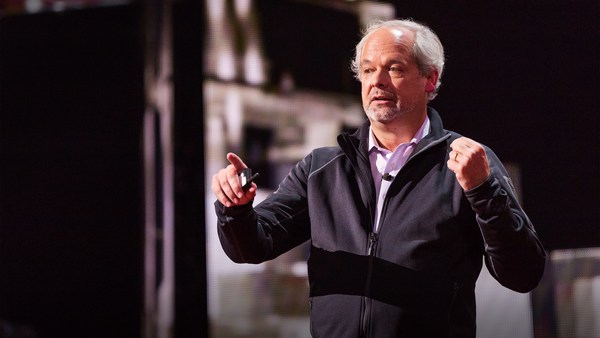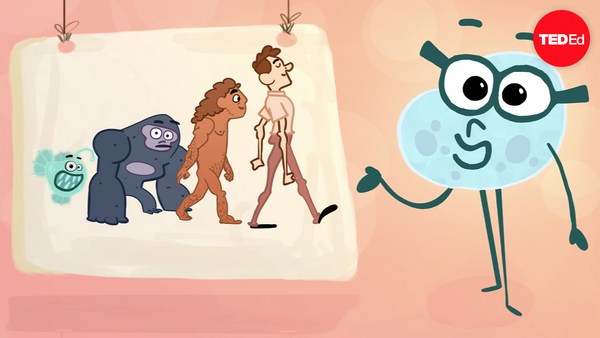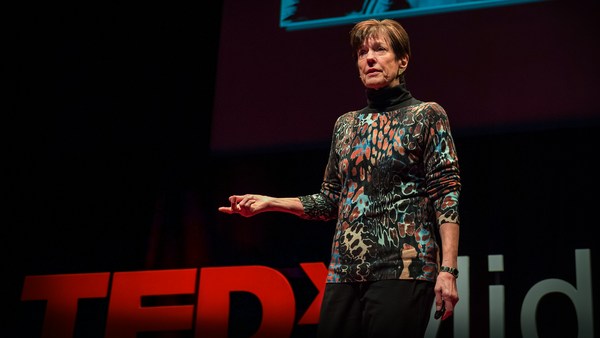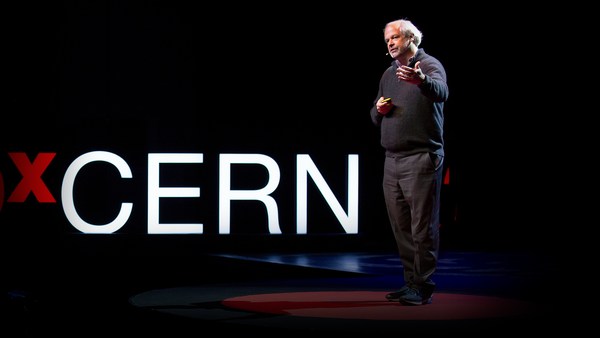So this is a talk about gene drives, but I'm going to start by telling you a brief story. 20 years ago, a biologist named Anthony James got obsessed with the idea of making mosquitos that didn't transmit malaria.
It was a great idea, and pretty much a complete failure. For one thing, it turned out to be really hard to make a malaria-resistant mosquito. James managed it, finally, just a few years ago, by adding some genes that make it impossible for the malaria parasite to survive inside the mosquito.
But that just created another problem. Now that you've got a malaria-resistant mosquito, how do you get it to replace all the malaria-carrying mosquitos? There are a couple options, but plan A was basically to breed up a bunch of the new genetically-engineered mosquitos release them into the wild and hope that they pass on their genes. The problem was that you'd have to release literally 10 times the number of native mosquitos to work. So in a village with 10,000 mosquitos, you release an extra 100,000. As you might guess, this was not a very popular strategy with the villagers.
(Laughter)
Then, last January, Anthony James got an email from a biologist named Ethan Bier. Bier said that he and his grad student Valentino Gantz had stumbled on a tool that could not only guarantee that a particular genetic trait would be inherited, but that it would spread incredibly quickly. If they were right, it would basically solve the problem that he and James had been working on for 20 years.
As a test, they engineered two mosquitos to carry the anti-malaria gene and also this new tool, a gene drive, which I'll explain in a minute. Finally, they set it up so that any mosquitos that had inherited the anti-malaria gene wouldn't have the usual white eyes, but would instead have red eyes. That was pretty much just for convenience so they could tell just at a glance which was which.
So they took their two anti-malarial, red-eyed mosquitos and put them in a box with 30 ordinary white-eyed ones, and let them breed. In two generations, those had produced 3,800 grandchildren. That is not the surprising part. This is the surprising part: given that you started with just two red-eyed mosquitos and 30 white-eyed ones, you expect mostly white-eyed descendants. Instead, when James opened the box, all 3,800 mosquitos had red eyes.
When I asked Ethan Bier about this moment, he became so excited that he was literally shouting into the phone. That's because getting only red-eyed mosquitos violates a rule that is the absolute cornerstone of biology, Mendelian genetics. I'll keep this quick, but Mendelian genetics says when a male and a female mate, their baby inherits half of its DNA from each parent. So if our original mosquito was aa and our new mosquito is aB, where B is the anti-malarial gene, the babies should come out in four permutations: aa, aB, aa, Ba. Instead, with the new gene drive, they all came out aB. Biologically, that shouldn't even be possible.
So what happened? The first thing that happened was the arrival of a gene-editing tool known as CRISPR in 2012. Many of you have probably heard about CRISPR, so I'll just say briefly that CRISPR is a tool that allows researchers to edit genes very precisely, easily and quickly. It does this by harnessing a mechanism that already existed in bacteria. Basically, there's a protein that acts like a scissors and cuts the DNA, and there's an RNA molecule that directs the scissors to any point on the genome you want. The result is basically a word processor for genes. You can take an entire gene out, put one in, or even edit just a single letter within a gene. And you can do it in nearly any species.
OK, remember how I said that gene drives originally had two problems? The first was that it was hard to engineer a mosquito to be malaria-resistant. That's basically gone now, thanks to CRISPR. But the other problem was logistical. How do you get your trait to spread? This is where it gets clever.
A couple years ago, a biologist at Harvard named Kevin Esvelt wondered what would happen if you made it so that CRISPR inserted not only your new gene but also the machinery that does the cutting and pasting. In other words, what if CRISPR also copied and pasted itself. You'd end up with a perpetual motion machine for gene editing. And that's exactly what happened. This CRISPR gene drive that Esvelt created not only guarantees that a trait will get passed on, but if it's used in the germline cells, it will automatically copy and paste your new gene into both chromosomes of every single individual. It's like a global search and replace, or in science terms, it makes a heterozygous trait homozygous.
So, what does this mean? For one thing, it means we have a very powerful, but also somewhat alarming new tool. Up until now, the fact that gene drives didn't work very well was actually kind of a relief. Normally when we mess around with an organism's genes, we make that thing less evolutionarily fit. So biologists can make all the mutant fruit flies they want without worrying about it. If some escape, natural selection just takes care of them.
What's remarkable and powerful and frightening about gene drives is that that will no longer be true. Assuming that your trait does not have a big evolutionary handicap, like a mosquito that can't fly, the CRISPR-based gene drive will spread the change relentlessly until it is in every single individual in the population. Now, it isn't easy to make a gene drive that works that well, but James and Esvelt think that we can.
The good news is that this opens the door to some remarkable things. If you put an anti-malarial gene drive in just 1 percent of Anopheles mosquitoes, the species that transmits malaria, researchers estimate that it would spread to the entire population in a year. So in a year, you could virtually eliminate malaria. In practice, we're still a few years out from being able to do that, but still, a 1,000 children a day die of malaria. In a year, that number could be almost zero. The same goes for dengue fever, chikungunya, yellow fever.
And it gets better. Say you want to get rid of an invasive species, like get Asian carp out of the Great Lakes. All you have to do is release a gene drive that makes the fish produce only male offspring. In a few generations, there'll be no females left, no more carp. In theory, this means we could restore hundreds of native species that have been pushed to the brink.
OK, that's the good news, this is the bad news. Gene drives are so effective that even an accidental release could change an entire species, and often very quickly. Anthony James took good precautions. He bred his mosquitos in a bio-containment lab and he also used a species that's not native to the US so that even if some did escape, they'd just die off, there'd be nothing for them to mate with. But it's also true that if a dozen Asian carp with the all-male gene drive accidentally got carried from the Great Lakes back to Asia, they could potentially wipe out the native Asian carp population. And that's not so unlikely, given how connected our world is. In fact, it's why we have an invasive species problem. And that's fish. Things like mosquitos and fruit flies, there's literally no way to contain them. They cross borders and oceans all the time.
OK, the other piece of bad news is that a gene drive might not stay confined to what we call the target species. That's because of gene flow, which is a fancy way of saying that neighboring species sometimes interbreed. If that happens, it's possible a gene drive could cross over, like Asian carp could infect some other kind of carp. That's not so bad if your drive just promotes a trait, like eye color. In fact, there's a decent chance that we'll see a wave of very weird fruit flies in the near future. But it could be a disaster if your drive is deigned to eliminate the species entirely.
The last worrisome thing is that the technology to do this, to genetically engineer an organism and include a gene drive, is something that basically any lab in the world can do. An undergraduate can do it. A talented high schooler with some equipment can do it.
Now, I'm guessing that this sounds terrifying.
(Laughter)
Interestingly though, nearly every scientist I talk to seemed to think that gene drives were not actually that frightening or dangerous. Partly because they believe that scientists will be very cautious and responsible about using them.
(Laughter)
So far, that's been true. But gene drives also have some actual limitations. So for one thing, they work only in sexually reproducing species. So thank goodness, they can't be used to engineer viruses or bacteria. Also, the trait spreads only with each successive generation. So changing or eliminating a population is practical only if that species has a fast reproductive cycle, like insects or maybe small vertebrates like mice or fish. In elephants or people, it would take centuries for a trait to spread widely enough to matter.
Also, even with CRISPR, it's not that easy to engineer a truly devastating trait. Say you wanted to make a fruit fly that feeds on ordinary fruit instead of rotting fruit, with the aim of sabotaging American agriculture. First, you'd have to figure out which genes control what the fly wants to eat, which is already a very long and complicated project. Then you'd have to alter those genes to change the fly's behavior to whatever you'd want it to be, which is an even longer and more complicated project. And it might not even work, because the genes that control behavior are complex. So if you're a terrorist and have to choose between starting a grueling basic research program that will require years of meticulous lab work and still might not pan out, or just blowing stuff up? You'll probably choose the later.
This is especially true because at least in theory, it should be pretty easy to build what's called a reversal drive. That's one that basically overwrites the change made by the first gene drive. So if you don't like the effects of a change, you can just release a second drive that will cancel it out, at least in theory.
OK, so where does this leave us? We now have the ability to change entire species at will. Should we? Are we gods now? I'm not sure I'd say that. But I would say this: first, some very smart people are even now debating how to regulate gene drives. At the same time, some other very smart people are working hard to create safeguards, like gene drives that self-regulate or peter out after a few generations. That's great. But this technology still requires a conversation. And given the nature of gene drives, that conversation has to be global. What if Kenya wants to use a drive but Tanzania doesn't? Who decides whether to release a gene drive that can fly?
I don't have the answer to that question. All we can do going forward, I think, is talk honestly about the risks and benefits and take responsibility for our choices. By that I mean, not just the choice to use a gene drive, but also the choice not to use one. Humans have a tendency to assume that the safest option is to preserve the status quo. But that's not always the case. Gene drives have risks, and those need to be discussed, but malaria exists now and kills 1,000 people a day. To combat it, we spray pesticides that do grave damage to other species, including amphibians and birds.
So when you hear about gene drives in the coming months, and trust me, you will be hearing about them, remember that. It can be frightening to act, but sometimes, not acting is worse.
(Applause)





